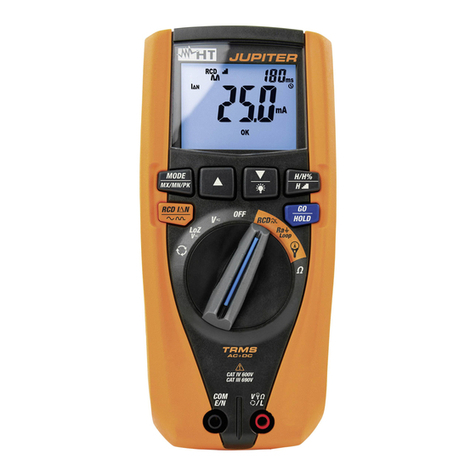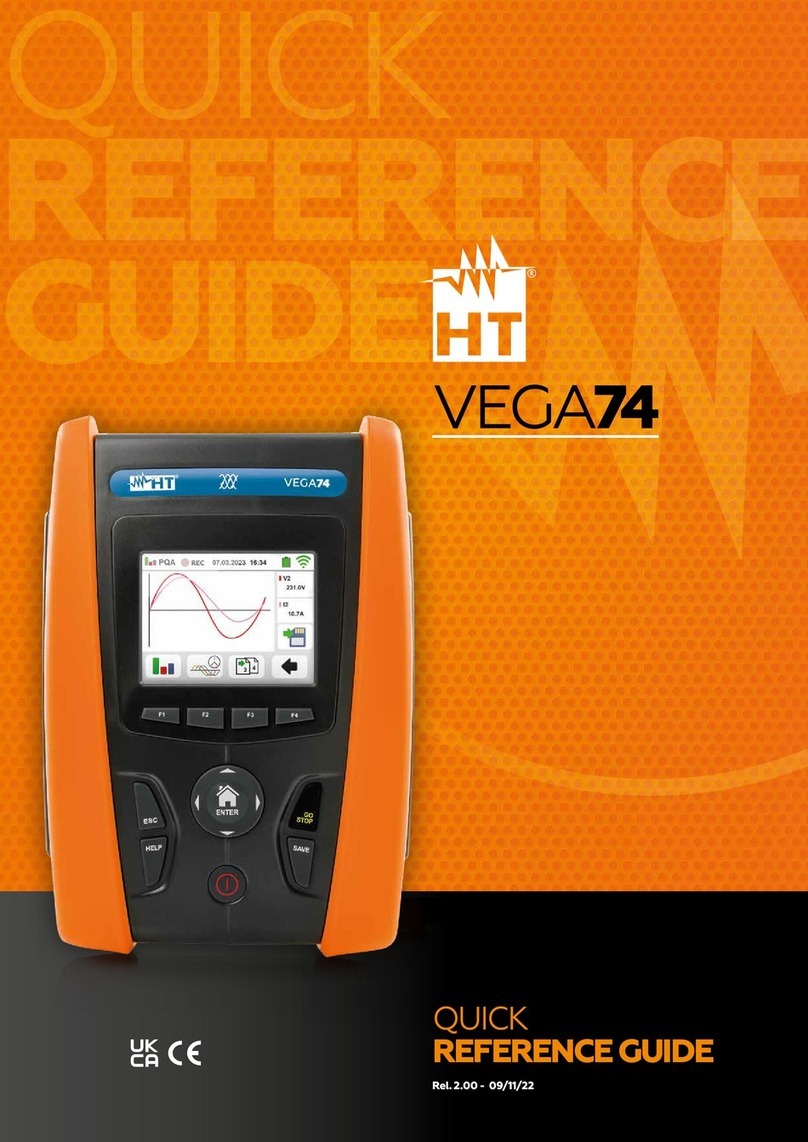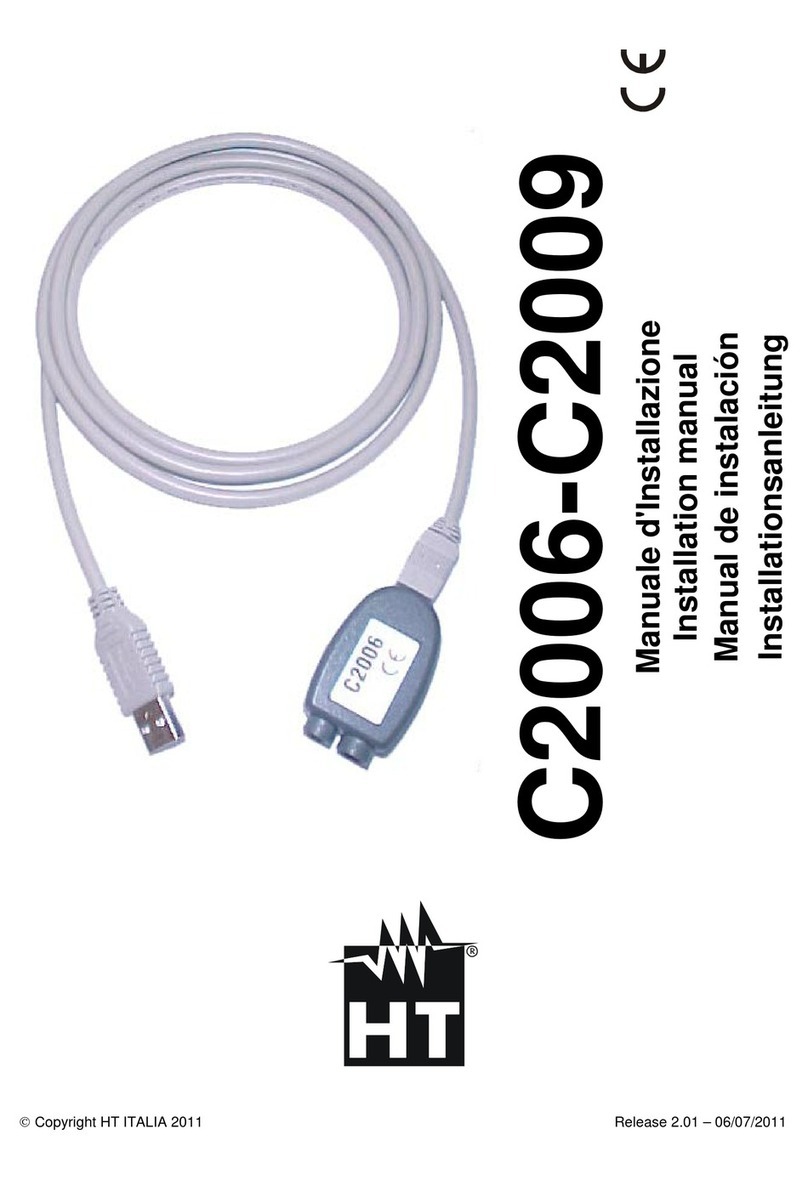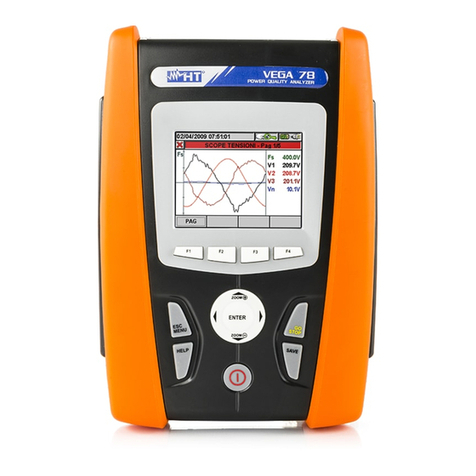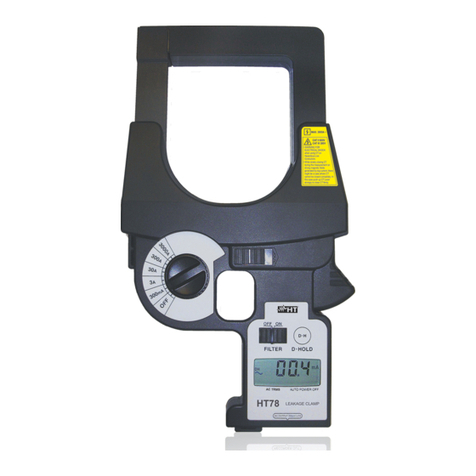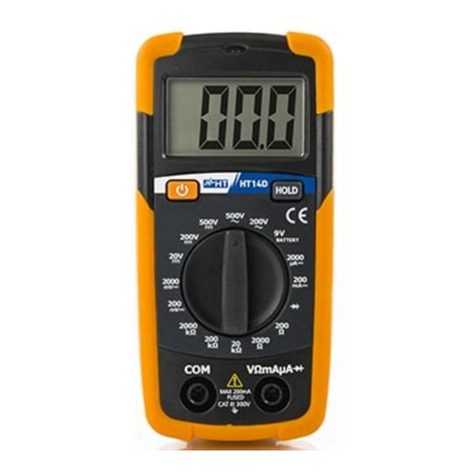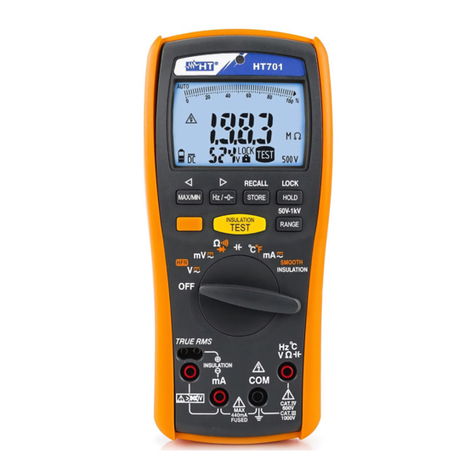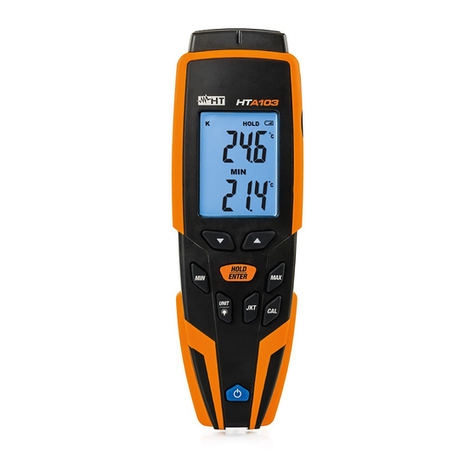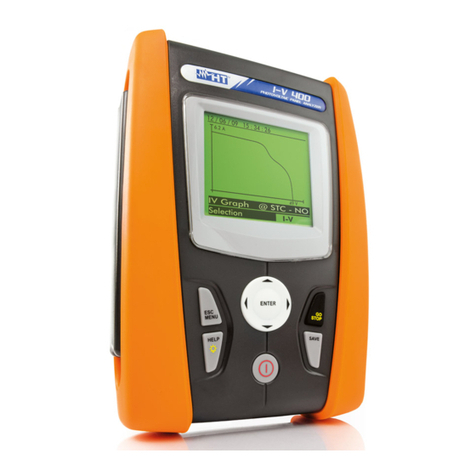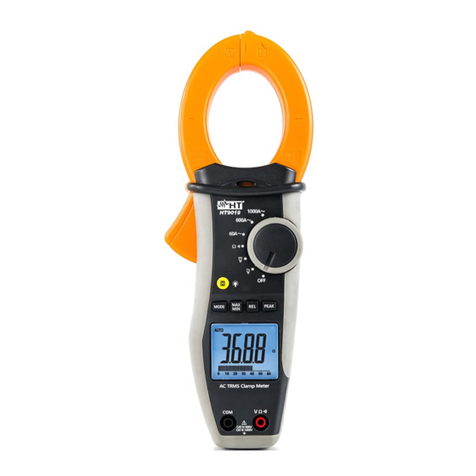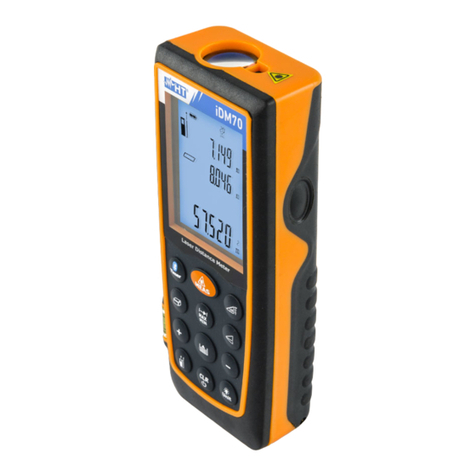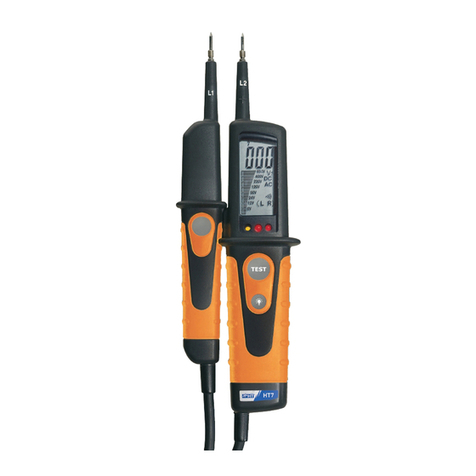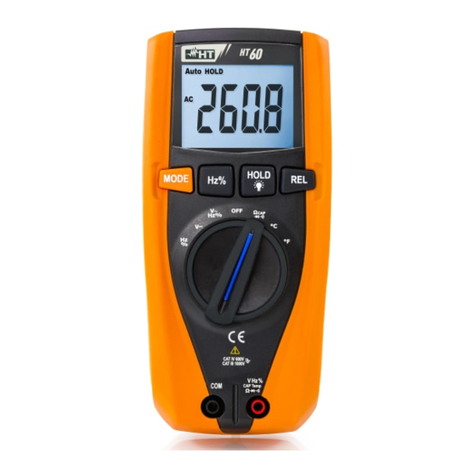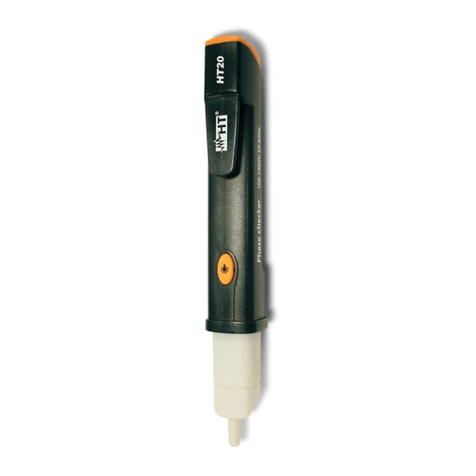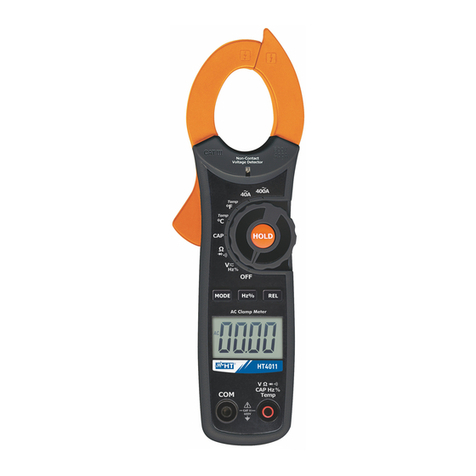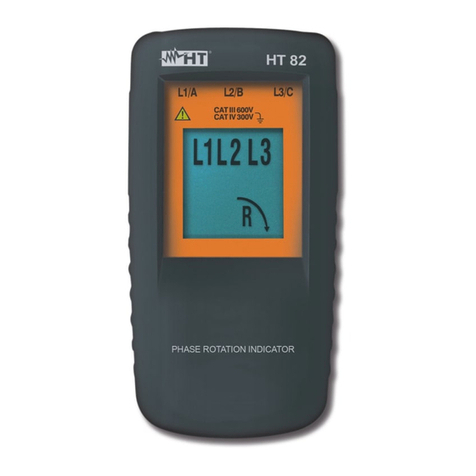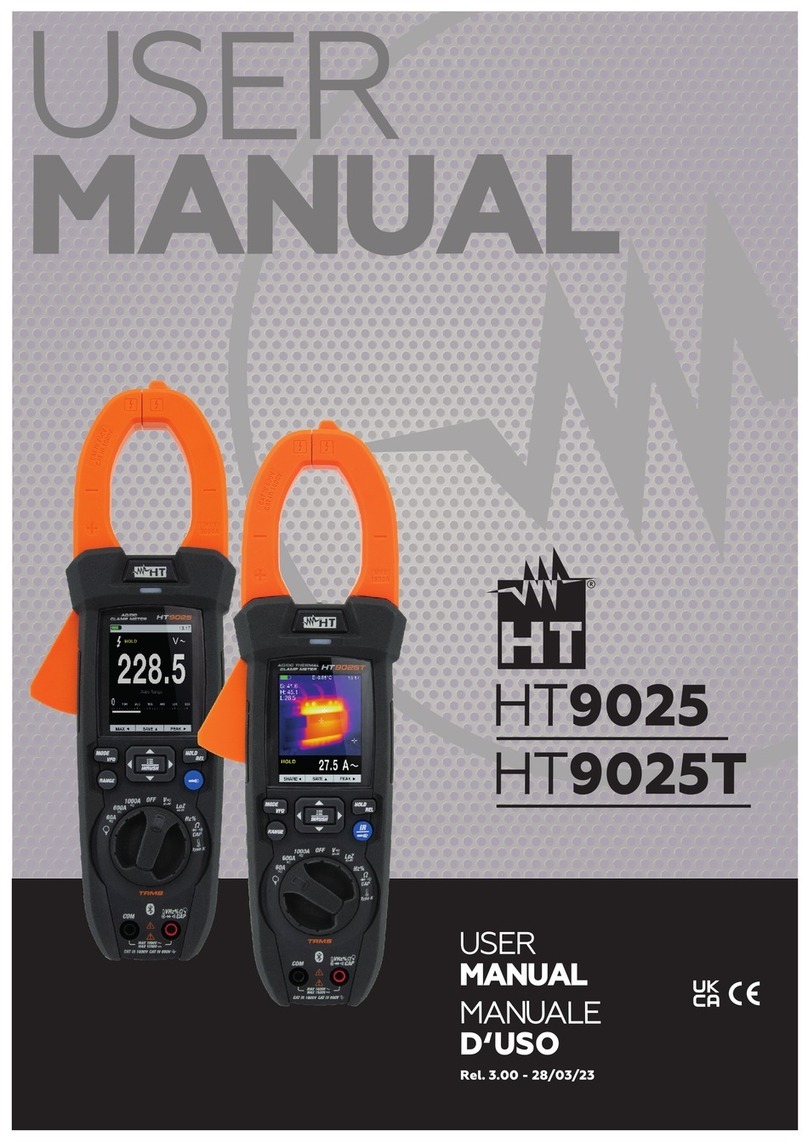
HT2055
EN - 1
TABLE OF CONTENTS
1PRECAUTIONS AND SAFETY MEASURES.............................................................................. 2
1.1Preliminary instructions ........................................................................................................................ 2
1.2During use ............................................................................................................................................ 3
1.3After use ............................................................................................................................................... 3
1.4Definition of measurement (overvoltage) category .............................................................................. 3
2GENERAL DESCRIPTION .......................................................................................................... 4
2.1Instrument features ............................................................................................................................. 4
3PREPARATION FOR USE .......................................................................................................... 5
3.1Initial inspections .................................................................................................................................. 5
3.2Instrument power supply ...................................................................................................................... 5
3.3Storage................................................................................................................................................. 5
4DESCRIPTION OF PARTS.......................................................................................................... 6
4.1HT2055S station unit description ......................................................................................................... 6
4.1.1Modify of supply voltage for HT2055S unit........................................................................................ 6
4.2Description of test leads ....................................................................................................................... 7
4.2.1Front view.......................................................................................................................................... 7
4.2.2Top view ............................................................................................................................................ 7
4.2.3Backside view.................................................................................................................................... 8
5INITIAL OPERATIONS WITH HT2055M UNIT............................................................................ 9
5.1Settings................................................................................................................................................. 9
5.1.1Language selection ........................................................................................................................... 9
5.1.2Help screen ....................................................................................................................................... 9
5.1.3Synchronization............................................................................................................................... 10
5.1.4Default settings................................................................................................................................ 11
5.1.5Time/Date settings .......................................................................................................................... 11
5.2Messages at display........................................................................................................................... 11
6INITIAL OPERATIONS WITH HT2055S UNIT .......................................................................... 12
6.1Settings............................................................................................................................................... 12
6.1.1Default settings................................................................................................................................ 12
6.1.2Setting output power ....................................................................................................................... 13
6.1.3Setting alarm condition.................................................................................................................... 13
6.2Adjust contrast of display ................................................................................................................... 14
6.3Help screens ...................................................................................................................................... 14
6.4Messages at display........................................................................................................................... 14
7HOW TO PERFORM THE MEASUREMENTS.......................................................................... 15
7.1Theory of Step/Contact voltage measurements................................................................................. 15
7.2Step/Contact voltage measurement................................................................................................... 16
7.3Earth resistance measurement .......................................................................................................... 21
7.4Ground resistivity measurement ........................................................................................................ 23
8OPERATION WITH MEMORY................................................................................................... 25
8.1Saving results..................................................................................................................................... 26
8.2Recall result at display ....................................................................................................................... 26
8.3Delete saved results........................................................................................................................... 27
9CONNECTION OF THE INSTRUMENT TO PC ........................................................................ 28
9.1Installation of software and initial configurations (Win XP) ................................................................ 28
10MAINTENANCE......................................................................................................................... 30
10.1Replacement and charging batteries ................................................................................................. 30
10.2Replacement fuses of HT2055S unit ................................................................................................. 30
10.3Cleaning the instrument ..................................................................................................................... 30
10.4End of life............................................................................................................................................ 30
11TECHNICAL SPECIFICATIONS ............................................................................................... 31
11.1General characteristics....................................................................................................................... 32
11.2Environment ....................................................................................................................................... 33
11.3Standard accessories......................................................................................................................... 33
11.4Optional accessories .......................................................................................................................... 33
12SERVICE ................................................................................................................................... 34
12.1Warranty conditions............................................................................................................................ 34
12.2Service................................................................................................................................................ 34













